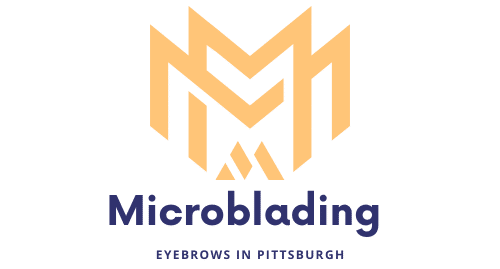What’s the Impact of IoT on Enhancing Traceability in the Cold Chain Logistics?

In a world that increasingly relies on technology, the Internet of Things (IoT) has made its mark across various sectors. One area where its presence is particularly felt is in cold chain logistics. IoT has revolutionized the way we monitor and manage the transportation of temperature-sensitive goods. From food products to pharmaceuticals, an efficient, real-time and quality-driven supply chain is vital.
This piece delves into the significant impact of IoT on improving traceability within cold chain logistics, exploring how this technology-based system has resulted in improved quality control, efficient management, and enhanced data accuracy.
A lire aussi : The 15 most memorable commercials that stand out today
IoT: Bridging the Gap in Cold Chain Monitoring
IoT has changed the game in cold chain logistics. Gone are the days of manual temperature checks and guesswork. Now, with IoT sensors and devices, precise temperature and time-tracking is possible throughout the entire supply chain process.
The application of IoT in cold chain management involves using sensors to collect data related to temperature, humidity, and location. These sensors are deployed within transportation units or packaging of temperature-sensitive goods. They provide real-time updates and alerts whenever there’s a deviation from the desired conditions, ensuring that the quality of goods is maintained throughout the transit.
Lire également : Can AI-Based Systems Predict Maintenance Needs in Large Fleet Operations?
This constant monitoring helps in avoiding spoilage of goods, reducing waste, and ultimately, saving costs. Also, since the entire process is automated, it reduces the chances of human error, thus improving the overall efficiency of the supply chain.
Enhancing Traceability with IoT-based Systems
Traceability, or the ability to track the origin, handling, and location of a product, is a crucial aspect of supply chain management. It is particularly important in cold chain logistics, where maintaining the right temperature is essential for the quality and safety of the product.
By integrating IoT technologies into the cold chain, traceability has been significantly enhanced. IoT devices provide real-time data on the product’s journey from the manufacturer to the consumer. This data includes details of when the product was shipped, what temperature it was stored at, how long it was in transit, and more.
Moreover, IoT systems can also provide predictive insights. For instance, they can forecast if a refrigerated truck is likely to fail during its journey, based on the historical data of the vehicle combined with real-time monitoring. This facilitates proactive measures to avoid potential losses.
Improving Food Safety and Quality with IoT
In the realm of food logistics, IoT plays a pivotal role in ensuring food safety and quality. The Food and Drug Administration (FDA) and other regulatory bodies have stringent regulations regarding the transportation of food products. Maintaining the correct temperature during storage and transit is critical to prevent the growth of harmful bacteria and to keep the food fresh.
With IoT sensors, real-time temperature monitoring of food products is possible. These devices can alert the relevant personnel if there’s a deviation from the set temperature parameters, enabling immediate corrective action. This not only ensures compliance with food safety regulations but also protects consumers from potential health risks.
Streamlining Data Management with IoT
One significant advantage of using IoT in cold chain logistics is the streamlining of data management. Before the advent of IoT, data collection and analysis used to be a cumbersome process. Companies had to rely on manual documentation, which was time-consuming and prone to errors.
However, with IoT, all the relevant data – be it temperature, time, location, or humidity – is collected automatically through sensors. This data is then transmitted to a centralized system in real time, where it can be accessed and analyzed seamlessly.
This technology not only saves time but also ensures data accuracy. Plus, it provides complete visibility into the supply chain, making it easier to identify and rectify any issues promptly.
Hence, IoT’s role in enhancing traceability in cold chain logistics not only improves efficiency and quality control but also contributes to cost savings and compliance with regulatory standards. Its ability to provide real-time data, streamline data management, and enhance food safety makes it an invaluable tool in today’s technologically-driven logistics landscape.
Cold Chain Management: The Role of IoT in Fruits and Vegetables Logistics
In the realm of cold chain logistics for fruits and vegetables, the role of the Internet of Things (IoT) is increasingly prominent. These fresh produce items are highly perishable and maintaining the right temperature and humidity levels during storage and transportation is essential. This is where IoT devices come into play.
IoT devices in cold chain systems provide real-time monitoring of temperature and humidity, ensuring optimal conditions are maintained. They collect data continuously and relay it to a central system where it can be analyzed and appropriate actions taken. This not only ensures the freshness and quality of the fruits and vegetables but also minimizes waste and loss due to spoilage, resulting in cost savings.
The collected data also offers traceability, offering insights into the journey of the produce from the farm to the retail store. This includes information on when and where the produce was harvested, how long it was in transit, and the conditions it was stored in.
In addition, IoT devices facilitate compliance with regulatory standards. For instance, they can provide documentation required by regulatory bodies such as temperature logs, proof of origin, and more.
Cold Chain Systems: The Transformative Impact of IoT on Pharmaceuticals Logistics
The pharmaceutical industry is another sector that has benefited greatly from the advent of IoT in cold chain logistics. Medicines, vaccines, and other pharmaceutical products often require strict temperature control during storage and transportation. Any deviation from the optimal temperature can lead to the degradation of these products, rendering them ineffective and potentially harmful.
With IoT in cold chain management, real-time monitoring of temperature and humidity is possible. IoT devices deployed in the pharmaceutical supply chain provide continuous data on the conditions the products are subjected to. They alert relevant personnel if there’s a deviation from the required conditions, enabling immediate corrective action.
Moreover, these IoT devices contribute to ensuring traceability and compliance in the pharmaceutical supply chain. They provide detailed data on the journey of pharmaceutical products, helping in ascertaining their authenticity and compliance with regulatory standards.
Furthermore, IoT devices can offer predictive insights, helping to forecast potential issues and take proactive measures. For instance, they can predict if a refrigeration unit is likely to fail based on its historical data and current condition, enabling timely intervention to prevent loss of valuable pharmaceutical products.
Conclusion
The revolutionizing impact of the Internet of Things on cold chain logistics is hard to overstate. By providing real-time data and enhancing traceability, IoT has significantly improved cold chain monitoring and management. It has ushered in a new era of efficiency, quality control, and data accuracy in the transportation of temperature-sensitive goods, be it fruits and vegetables or pharmaceuticals.
IoT’s role in streamlining data management also deserves a special mention. It has simplified the once cumbersome process of data collection and analysis, reducing the chances of human error and saving valuable time.
In conclusion, the integration of IoT in cold chain logistics is a game-changer. Its ability to provide real-time monitoring, enhance traceability, and streamline data management makes it an invaluable tool in today’s technologically-driven logistics landscape. The future of cold chain logistics is undoubtedly intertwined with the advancement of IoT technology.
